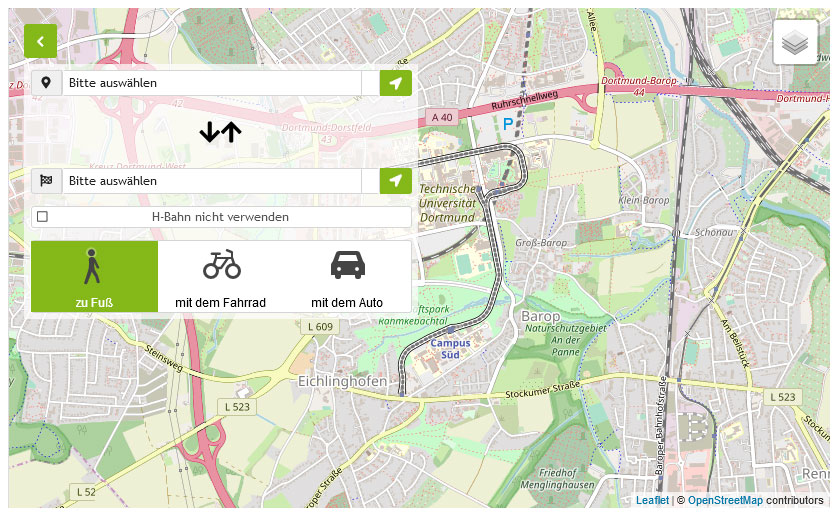Materials
Here you will find various worksheets and hints that can be helpful when writing academic texts. They can be used across languages. This page will be continuously supplemented with further materials.

For Download
Academic Writing in German
Wie finde ich ein Thema für eine wissenschaftliche Hausarbeit? (in German)
Wie grenze ich ein Thema ein? (in German)
Wie entwickle ich eine Forschungsfrage? (in German)
Wie finde ich Literatur für eine wissenschaftliche Arbeit? (in German)
Wann darf ich in einer wissenschaftlichen Arbeit "Ich" schreiben? (in German)
Wie formuliere ich Einleitung und Schluss? (in German)
Wie erstelle ich eine Gliederung? (in German)
Wie strukturiere ich einzelne Kapitel (in German)
Wie zitiere ich richtig? (in German)
Wie vermeide ich Plagiate? (in German)
Wie baue ich Schreibblockaden ab? (in German)
Wie funktioniert die Pomodoro-Technik? (in German)
Wie kann ich meine Forschungsfrage präzisieren? (in German)
Wie gehe ich beim Lesen der Fachliteratur systematisch vor? (in German)
Wie werte ich die gelesene Fachliteratur systematisch aus? (in German)
Wie verfasse ich ein Exposé? (in German)
Wie bewältige ich mein Schreibprojekt Schritt für Schritt? (in German)
Wie gestalte ich ein Referat? (in German)
Writing in Spatial Planning (in German)
Academic Writing in English
How to Use the First Person in Academic Writing
How to Write a Tight Paragraph
How to Use Punctuation Correctly
How to Write Effective Employment Documents
How AI Tools Can Support Academic Writers
How to Jumpstart Your Revision with Online Editing Tools
Where to Find Online Tools for Vocabulary Use
Video Tutorials
Dreischritt (in German)
Exposé (in German)
Pomodoro Technik (in German)
Themenfindung (in German)
Themeneingrenzung (in German)
Plagiate (in German)
Schreibblockaden (in German)
FAQs
General
Generally problematic are statements that you do not treat in a differentiated way but merely list, that you do not question but regard as dogma, that you let desolate on the level of descriptions and that you don’t substantiate by citing sources or logical derivation (cf. Kornmeier, Wissenschaftliches Arbeiten leicht gemacht, 2008:44).
Further monita: programmatic spelling and grammatical errors, tautologies, gaps in explanation, uncommented quotations, plagiarism, missing common thread.
On the content level: relevance, connectivity, methodological approach, theoretical foundation, differentiated research question, literature (quality and quantity), common thread, objectivity, coherent argumentation, critical appraisal of one's own research approach.
At the level of style: general vocabulary, choice of words, technical terms, sentence structure, tense, language aesthetics, clarity, comprehensibility, flow of language.
At the level of form: care in layout, spelling and grammar, consistency, list of sources, (in the case of a printed work) processing, overall impression.
(See also What should be avoided in a scientific paper? and cf. Kornmeier, Wissenschaftliches Arbeiten leicht gemacht, 2008)
More precisely, one should say here: “If someone else has already worked on my question” (see also Difference topic, title, question). In this case, you might work on the question again; because you might come to a different result; thus be able to show that the results of earlier investigations have changed over time, or you might choose another perspective and place your work on a different theoretical foundation (cf. Kornmeier, Wissenschaftliches Arbeiten leicht gemacht, 2008:44).
Proofreading refers to spelling, grammar and also style, while editing focuses on content. Colloquially, “editing” is often used instead of “proofreading”. Proofreading in the narrower sense can involve plagiarism problems. Whether proofreading or editing, you are always responsible for what you ultimately turn in.
Writing Environment
In such a way that you can sit back-friendly and have sufficient light. Whether you keep your workspace plain or decorate it, whether you work in the presence of noise (see What is concentration enhancing?) or not, is up to you. You might like to try sitting in a different place from day to day; after all, a change of environment encourages the flow of thoughts. Just changing the desktop background can have this effect.
Writing Process
By simple getting started. That is certainly easier said than done. The following exercise is helpful: set your alarm clock for five minutes and write by hand or by computer on the topic you have in mind without stopping. Grammar, style, and spelling don’t matter here – uninterrupted writing is now important. After five minutes, read through your text, make corrections, and underline the words, groups of words, or thoughts that you particularly like. Organize what you have underlined into a flow chart. Formulate an opening and a closing thought for the diagram, and make notes on each station if necessary. Now use this diagram to formulate an initial text. This will be the basis for a first chapter of your academic paper (cf. freies Schreiben, Textpfad, e.g., Scheuermann Schreibdenken, 2016).
This exercise can be varied as you like. For example, you can limit yourself to free writing, extend the writing interval, and make it a ritual of your start of the day. Free writing immediately after waking up is particularly effective (see Cameron, The Artist's Way (2011)). Another option is to do a writing relay, where after each writing interval you formulate a concluding thought that becomes the guiding thought of the next interval (cf. Scheuermann, Schreibdenken, 2016) and see also How do I maintain the writing process).
The tomato or pomodoro method helps here. For example, work on your text with concentration for twenty-five minutes and then take a five-minute break. Then write again for ten minutes, and so on. You can also highlight the writing phase with ASMR (see What is concentration-enhancing?).
ASMR (Autonomous Sensory Median Response). This includes sounds such as birds chirping, the babbling of a brook, but also the foaming of sponges, cracking with foil, or genre sounds such as trains pulling in with luggage being loaded at the station. Pomodoro Harry Potter clips were compiled especially for the writing process (see Youtube).
There is no right and no wrong in science. Ultimately, you can claim whatever you want - you just have to be able to justify it. This results in good planning and sensible management of your knowledge in order to formulate conclusive thoughts that are comprehensible to third parties. This includes the differentiated treatment of your statements, their discussion, critical appraisal as well as their substantiation (cf. Kornmeier, Wissenschaftliches Arbeiten leicht gemacht, 2008:44).
When you argue, you connect one thought with a second (cf. Kruse, Critical Thinking and Argumentation, 2017). On the macro level, you provide an assertion, its rationale, give an example, formulate a conclusion, possibly an appeal. In other words, you support your claim and make your thoughts comprehensible and plausible to others (see teach Sam) At the micro level, you use connectors such as “because, so that” and “but” to model the connection quality from one thought to the next.
Absolutely yes! However, it is first important that you write regularly and have internalized the basics of academic work or writing. Often a style cannot be planned, it happens. You will see this when you reread texts of yourself and compare current texts with older ones. Style, that is, oral and written expression, is reflected, for example, in vocabulary, that is, in its richness and/or your ability to form new words within the academic context. Style is also reflected, among other things, in sentence structure and its dosage: whether you can use topicalizations or alternate well and meaningfully with long and short sentence constructions. Important: A style is ultimately always an overall impression.
Often, you will be asked to provide the exact wording of the “topic” on the exam registration form. However, a topic is just a global reference to the area (the domain) of the question you are working on. Strictly speaking, on the forms you are asked for the title, i.e., the name of your paper. This must later appear on your cover sheet exactly as you have submitted it to the examination office. Accordingly, a question does not appear on the application form or on the cover sheet, but is part of your text body.
Example: The topic is Coke oven gas, the question: How can phenol be produced energy-efficiently from coke oven gas in the context of competitive pressure within the coal and steel industry? The title: Coal and steel industry, coke oven gas and its further processing - An approach to the energy-efficient production of phenol.
The following three-step process has proven particularly helpful (cf. Griesshammer et al., Zukunftsmodell Schreibberatung, 2019: 178-179):
- Name the topic: what am I writing about? -> I am investigating lugworms.
- Integrate the specific reason: What exactly do I want to know? -> I am studying lugworms because I want to find out how they bind oxygen in the blood.
- Define the goal of the investigation: Why do I want to know this? -> I am studying lugworms because I want to find out how they bind oxygen in the blood to test if there is any relevance to the human organism.
Put number 3 into question form: Does the way lugworms bind oxygen in the blood result is relevant to the human organism?
Rephrase the question into a statement: The aim of this paper is to find out whether in lugworms the way oxygen is bound in the blood has any relevance to the human organism.
Hypotheses can also be derived from this objective.
In your paper, you may formulate a direct or indirect research question. If necessary, compare this with the requirements of your work area.
Text Optimization
Texts are revised through fields of information, visualisation, navigation and formulation. Depending on the weighting of these fields, a text is shaped +/- extensive. The weighting depends on the specifications of the examination regulations, the addressee, and the intention of the text.
Revision fields, their order, and guiding questions:
- Information: What information do I include in my text and how detailed should the text be?
- Visualization: Are visualizations useful for my text? If so, what form of visualization is appropriate?
- Navigation: How do I guide the reader through the text? Linguistically? Visually?
- Formulation: How do I design the sentence structure, the sentence length? How do I choose my words?
The interaction of the fields is similar to an ecosystem: The decision made within one field has almost always an effect on the other fields. For example, if you present a complex process with many sub-steps, you serve the field information. If, however, the process proves to be too complex to be put into words, the visualization field is added through representations such as flowcharts. This may result in a shift of main focus from the field of information to visualization, so that only a shorter explanation is necessary in the continuous text. In this way, the formulation field is also always addressed. The reference to an illustration in the text represents the navigation field.
Changes in fields 1 to 3 always affect field 4. This is the last field to be edited.
There are numerous checklists on the Internet for the revision of personalized services. Once these have been worked through, it is advisable to read through the text once again. (see also Theuerkauf, Judith (2012): Schreiben im Ingenieurstudium. Paderborn: Schöningh, utb).
Decisive factors for the comprehensibility of a text are the -> selection of information and -> information density.
Decisive for the selection of information is the content-related objective or research question (see also -> How do I develop a research question?). The facts that are essential for the research goal are selected for presentation in the text and everything that has nothing to do with it is deleted.
However, gaps in understanding should be avoided or repaired. A repair is done by increasing the -> information density, i.e., by filling the gaps with additional information. Often an explanatory sentence is sufficient to bridge from information A to information B.
Texts are usually written because they contain information that readers do not have. Yet, which kind of information this is specifically can only be estimated. Therefore, when writing a text, it makes sense to seek dialog with supervisors, peers, and people from outside the field, and to repeatedly switch from the author’s to the reader’s perspective.
After deciding on the selection of information, it is important to determine the information density (see also -> What is information density and how can it be optimized?).
The information density indicates how much information is available per text length. It depends on the reader’s prior knowledge.
Increase information density: In the case of what is actually known, in order to achieve completeness or to find starting points for an argument, the central point is summarized in one sentence and a reference to further sources is given.
Reduce information density: In the case of essential content, complex facts, or completely new information, it is necessary to take more time in the text, to become smaller and thus to present less content per sentence. In this way, you also explain new facts to yourself first.
Optimization Example (in German) from Theuerkauf, Judith (2012): Schreiben im Ingenieurstudium. Paderborn: Schöningh, utb.:
Sentence with high information density:
Die Sachbilanz ist die Basis für die darauf aufbauenden Stufen Wirkungsabschätzung und Auswertung der Ökobilanz. Fehler in der Sachbilanzierung können in diesen Folgestufen der Ökobilanz nicht vorsätzlich kompensiert werden.
Small steps through additional information, by which essential terms are explained, here “life cycle assessment”:
A. Die Ökobilanz ist eine Methode, mit der Umweltbelastungen eines Produktes systematisch erfasst werden können.
Naming the “subsequent steps of the LCA”:
B. Die Schritte der Ökobilanz bestehen in 1. Sachbilanz, 2. Wirkungsabschätzung, 3. Auswertung.
Breaking down of the phrase “subsequent steps”:
C. Fehler in der Sachbilanz setzen sich über die nachfolgenden Schritte fort und können dort nicht mehr kompensiert werden.
Section with reduced information density (A+B+C):
Die Ökobilanz ist eine Methode, mit der Umweltbelastungen eines Produktes systematisch erfasst werden können. Die Schritte der Ökobilanz bestehen in 1. Sachbilanz, 2. Wirkungsabschätzung, 3. Auswertung. Fehler in der Sachbilanz setzen sich über die nachfolgenden Schritte fort und können dort nicht mehr kompensiert werden.









